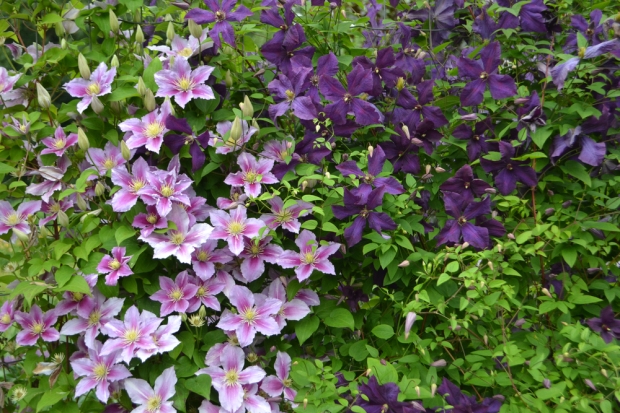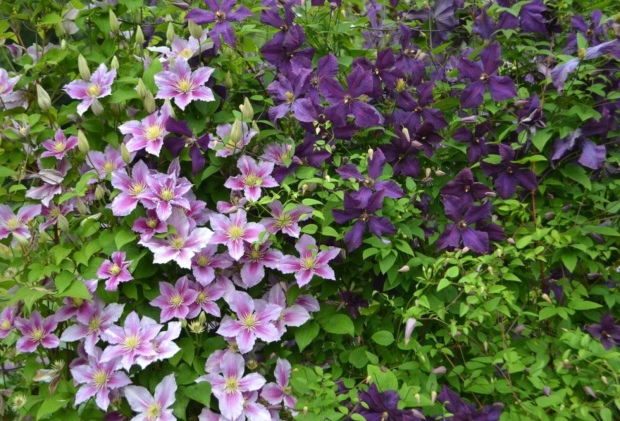
How to Prune Clematis
Did you know that if you find earthworms in your garden, that your soil is healthy? Earthworms help to aerate the soil and to add valuable nutrients in the form of worm castings. These castings provide your plants with some of the essential nutrients they need.
While clematis plants are known for their stunning flowers adorning a mass of vines, they need to be regularly pruned to keep the plants from becoming a mass of tangled stems. Regularly pruning a plant manages its size and shape and also helps encourage strong vine growth and prolific flowering all along with the plant.
It’s essential, though, to prune them correctly. If pruned improperly, you could end up with a plant that stops flowering completely.
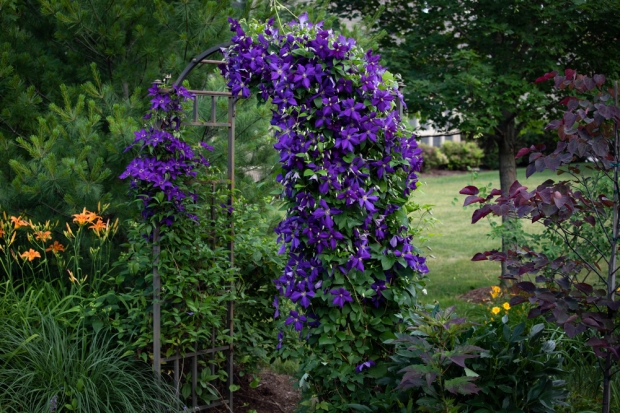
The 3 Clematis Pruning Groups
Clematis plants are classified into three different groups, depending upon when they flower and if they bloom on new growth or old vines. These characteristics determine when and how to prune your plant.
- Group 1 clematis are spring bloomers.
- Group 2 clematis are mid-season bloomers and can be repeat bloomers.
- Group 3 clematis are late summer or fall bloomers.
Group 1
Sometimes called “Group A” or “Type A,” the clematis varieties in this group tend to be larger plants that bloom very early in the season. Their early flowering means the blooms were formed the previous year. Group 1 includes the alpina, armandii, cirrhosa, macropetala, and montana.
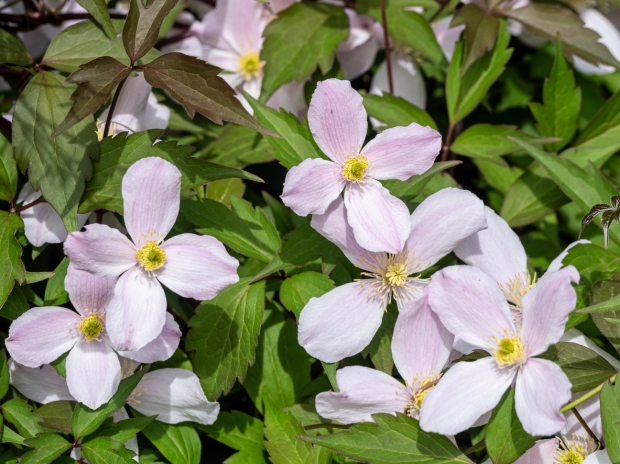
Group 2
Also known as “Group B” or “Type B” clematis, Group 2 bloom later than Group 1 and earlier than Group 3. The first flush of flowers opens in late May or early June, with a second bloom erupting in late summer. Buds develop on a combination of old and new growth. Varieties include Nelly Moser, Lasurstern, Vyvyan Pennell, Mrs. Cholmondeley, and Duchess of Edinburgh.
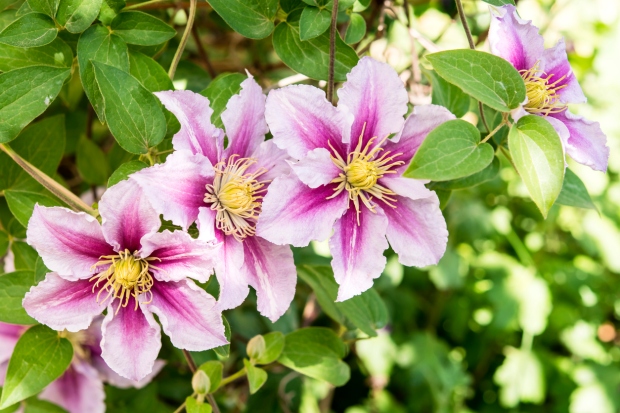
Group 3
Group 3 clematis are the latest blooming varieties, flowering in late summer or early fall. They bloom on the current season’s growth and include Gipsy Queen and the smaller groups like viticellas, orientalis, tangutica, and texensis.
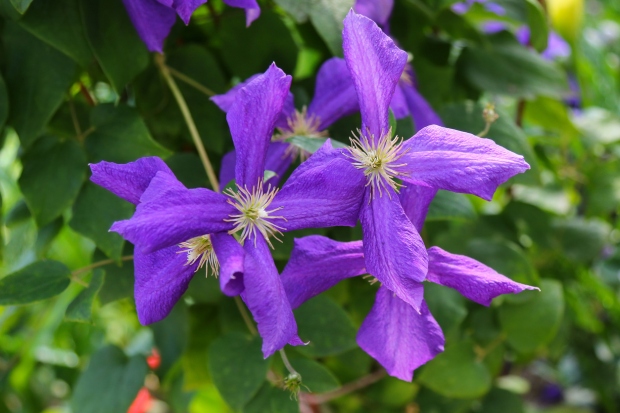
How to Prune Group 1
Since Group 1 clematis flower on old vines, the general rule of thumb when pruning them is to avoid pruning. Severely pruning these plants removes all of the developed buds, resulting in a plant that won’t flower.
Instead, you can trim or shape them lightly just after they finish flowering for the season. Trim back no more than one-third of the plant as they do not like severe pruning. Pruning them early in the season encourages new growth that develops buds for the following year.
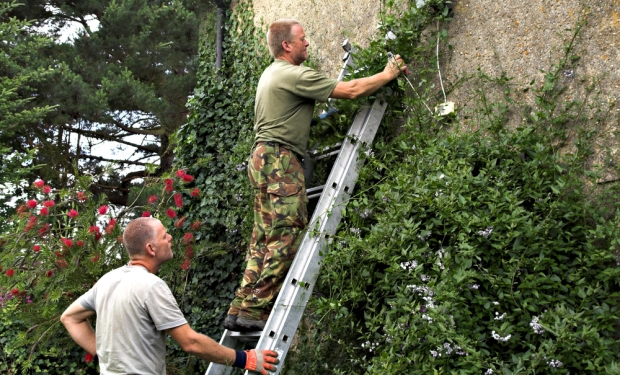
How to Prune Group 2
Group 2 clematis are a cross of the other two groups. Some flower buds develop on wood from the previous year and some form on the current season’s new vine growth. A light pruning is best with this type unless the plant has grown too large for its allotted space.
Plan to prune Group 2 clematis in early spring just as active growth starts for the season. This is typically February or early March. Wait until the flower buds turn green and begin swelling, so they are easy to see.
Start at the top of each vine and work your way down. When you reach the first pair of strong, healthy buds, make a pruning cut just above them. Repeat this process for each vine on the plant.
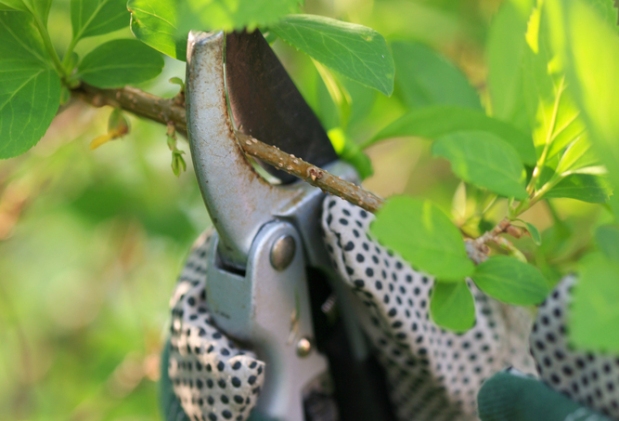
How to Prune Group 3
Pruning Group 3 clematis varieties is the opposite of pruning the other two groups. This group thrives when pruned hard since the flower buds develop on the season’s new growth. If these plants are not pruned to remove the majority of the plant, the base develops a leggy appearance that is leafless and unattractive.
Group 3 clematis should be pruned in February if you live in Southern growing zones and early March if you live in the North. Some gardeners prune their plants – with great success – in late fall as they go dormant for the year.
If pruning in the spring, start at the bottom of each vine and work your way up from the ground. When you come to the first pair of strong, healthy buds, make a pruning cut just above them. Then repeat the process for every vine on the clematis plant.
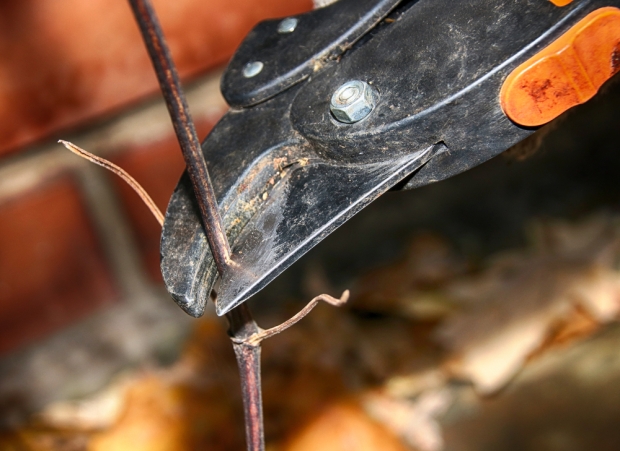
You can lop the entire plant off about 12-15” from the ground for fall pruning.
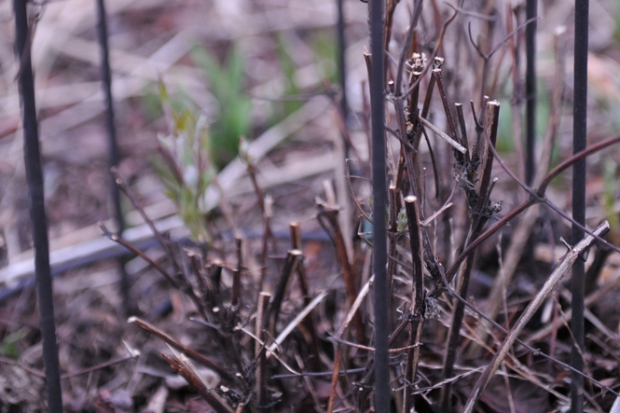
Pruning Tips
- Wait until the second year to prune your plant so that you have a better understanding of when it blooms.
- Deadhead spent flowers immediately after they fade to promote a second flush of flowers.
- Remove any dead or damaged stems when pruning clematis vines. They can also be pruned out any time during the season to keep your plant looking neat and tidy.
- Always clean your pruning shears before and after working to prevent spreading any possible disease infections from one plant to another.
- When pruning for shape or size, periodically step back from the plant to assess your progress.
